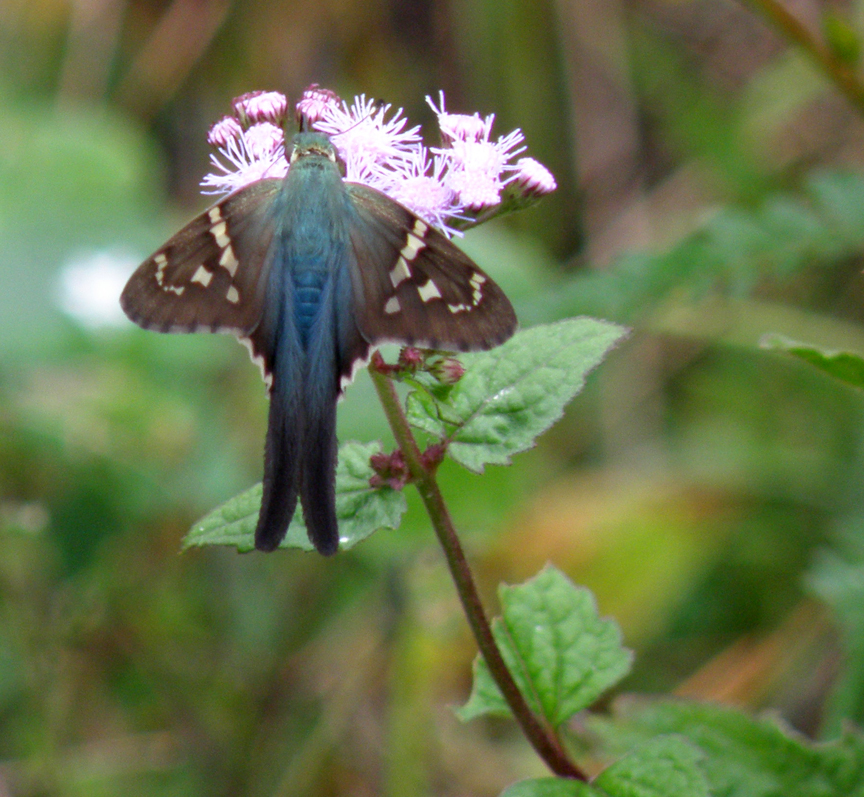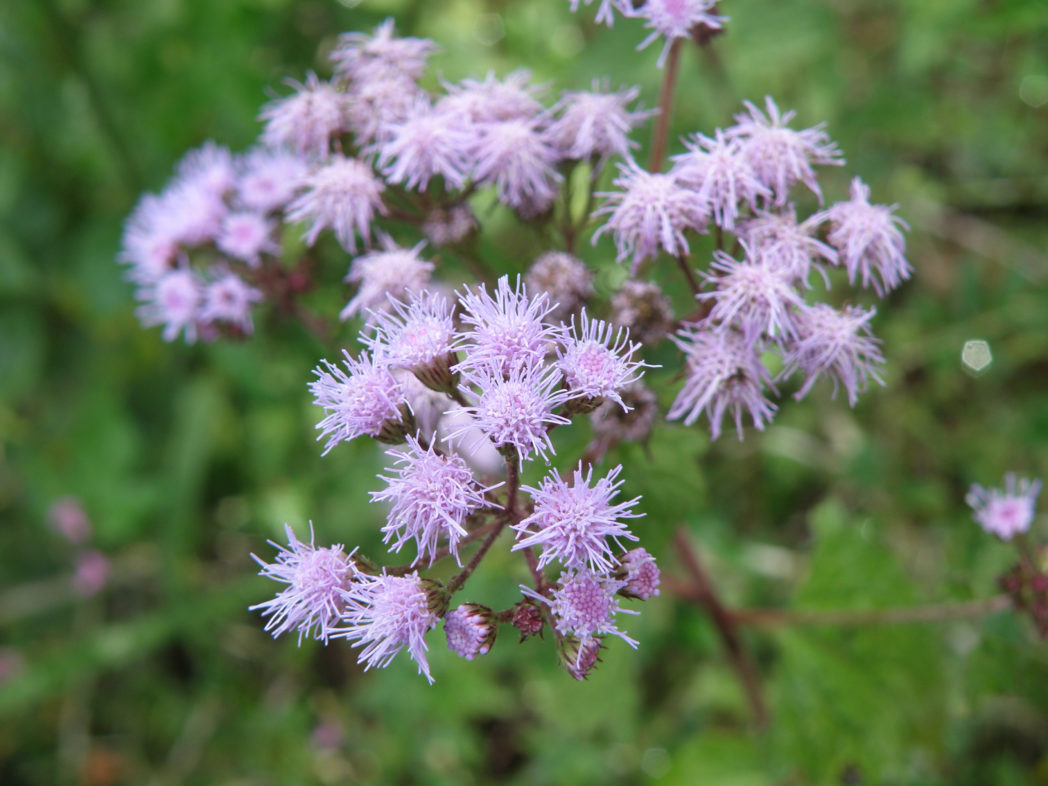Mistflower
Pictured above: Mistflower (Conoclinium coelestinum) by Stacey Matrazzo. Click on terms for botanical definitions. View post as a PDF.
Mistflower (Conoclinium coelestinum) is an eye-catching wildflower known by many common names: Blue mistflower, Wild ageratum, Pink eupatorium, Hardy ageratum and Blue boneset. Found in riverine swamps, moist meadows and roadside ditches, its flowers give the appearance of a blue fog when blooming en masse. Flowers are very attractive to pollinators, especially butterflies, moths and long-tongued bees.
Mistflower’s many branched stems that bear dense, flat clusters of disk florets that vary in color from bright blue to lavender to pinkish-white. Ray florets are absent. Long protruding stamens give the flower heads a fuzzy appearance. Light green linear bracts surround the flower base. Leaves are almost triangular in shape, with toothed margins and faintly pubescent surfaces. They are petiolate and oppositely arranged. Fruits are small achenes with tiny hairs that aid in wind distribution. Roots are rhizomatous.
The genus Conoclinium was once classified in the genus Eupatorium, but genetic analysis revealed differences that required reclassification to its own genus. The species epithet coelestinum is from the Latin caelistis (coelestis), meaning “celestial” or “heavenly.” It refers to the sky-blue color of the flowers.

Family: Asteraceae (Aster, daisy or composite family)
Native range: Throughout Florida
To see where natural populations of mistflower have been vouchered, visit florida.plantatlas.usf.edu.
Lifespan: Perennial
Soil: Moist to wet, sandy, loamy or mucky soils
Exposure: Full sun to partial shade
Growth habit: 1–3’ tall
Propagation: Seed, division
Florida regions of landscape suitability: North, Central, South
Garden tips: Mistflower is perfect for a wildflower garden where they can naturalize freely, particularly in a moist, partially shaded setting. It does spread quickly, however, and can take over if not maintained. It is very easy to grow from seed and by division, and makes a good border plant.
Caution: Mistflower has a wide range throughout the East and Midwest. Many cultivars have been developed, so be sure to buy locally sourced plants. Praxelis clematidea is a very aggressive invader that looks a lot like Mistflower. The flowerheads are taller than wide, its seeds are black, and its leaves smell like cat urine when crushed. It grows in drier soils and is usually found in disturbed sites.
Mistflower seeds are available through the Florida Wildflowers Growers Cooperative. Plants are often available at nurseries that specialize in native plants. Visit PlantRealFlorida.org to find a native nursery in your area.
Learn more about Mistflower from the Florida Native Plant Society and the Institute for Regional Conservation.

